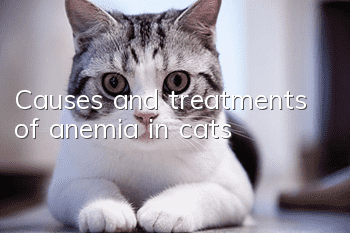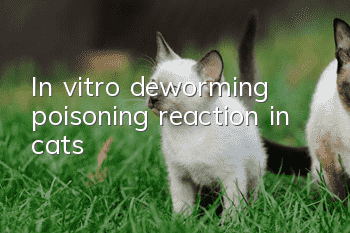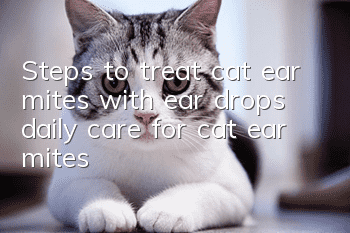Causes and treatments of anemia in cats

Feline anemia is the same as human anemia. Anemia may not seem scary, but if you don’t pay attention to it, cats may be in danger. Anemia is not an independent disease, but a symptom associated with different diseases caused by various reasons. So what are the causes of anemia in cats?
Causes of cat anemia
1. Aplastic anemia is an anemia caused by impairment of bone marrow hematopoietic function caused by certain factors. Such as benzene, chloramphenicol, streptomycin poisoning, x-ray exposure, and certain infectious diseases can cause aplastic anemia.
2. Hemorrhagic anemia is anemia caused by trauma, rupture of internal organs (such as liver, spleen), and blood vessel damage caused by surgery.
3. Nutritional anemia is anemia caused by long-term lack of protein or iron, copper, cobalt, vitamin B6, vitamin B12 and folic acid in the feed.
4. Hemolytic anemia is caused by the pathogens of certain infectious diseases and parasitic diseases, which can produce hemolytic toxins and destroy red blood cell membranes, causing anemia, or congenital diseases such as congenital hemolytic anemia in cats.
Symptoms of anemia in cats
Lack of energy, fatigue and weakness, pale mucous membranes, weight loss, increased respiratory rate, and severe symptoms of dyspnea. Generally, the body temperature is not high. In addition, due to different causes, some characteristic symptoms may appear: such as acute hemorrhagic anemia, which has an acute onset and severe symptoms; hemolytic anemia, which is often accompanied by jaundice symptoms of the skin and mucous membranes; nutritional anemia , the symptoms develop slowly and the body temperature is not high. For example, in anemia secondary to parasites or infectious diseases, normal body temperature rises in the acute phase, and the corresponding pathogens can be found. Regardless of the cause of anemia, when blood tests are performed, changes such as a decrease in the number of red blood cells, a decrease in the amount of hemoglobin, and uneven red blood cell sizes and uneven coloring can be seen.
Treatment methods for cat anemia
To treat anemia, we must first identify the cause and provide appropriate treatment. The principle of treatment is to provide necessary hematopoietic raw materials, enhance bone marrow function, maintain blood circulation, prevent shock, and remove the cause of the disease. For example, deep intramuscular injection of dextran iron drill injection (iron drill needle), 0.5 ml each time, and another injection after two days in severe cases, or oral administration of artificial blood-supplementing syrup (containing 0.12 grams of strychnine nitrate, 22 grams of ferrous sulfate) , 3.2 grams of copper sulfate, 0.015 grams of cobalt sulfate or cobalt chloride, syrup added to 500 ml), 0.5 to 1 ml each time, twice a day. Nutritional anemia can be treated by oral administration of 0.1-0.3 g ferrous sulfate sugar-coated tablets; intramuscular injection of vitamin B1250-100 mcg, once a day; liver essence injection 1-2 ml, intramuscular injection, once a day.. For aplastic anemia, intramuscular injection of 5 to 10 mg of methacryone propionate, once a day, can stimulate the hematopoietic function of the bone marrow and promote the production of red and white blood cells, or oral administration of 1 to 5 mg of fluoromethyl methacrylate, once a day. .
In terms of feeding and management, it is necessary to strengthen nutrition, provide high-quality food rich in various nutrients, and exercise appropriately to promote recovery. Prevent and treat anemia and keep cats healthy.
- Do Ragdoll cats need to supplement taurine every day? A must-read for novices!
- How to prevent cats from wandering at night? Get rid of cats’ “nocturnal wandering syndrome”!
- How to deworm your pets regularly?
- Somali cat food taboos
- How to train a cat? Cats can be trained like this!
- Should the cat food eaten by a three-month-old cat be soaked?
- How intelligent is a Burmese cat?
- What will the 25-color golden gradient look like when it grows up? Will it turn black?
- Why is the cat foaming at the foam but in good spirits?
- The "unique skill" of cat care, let the cat obey you!



